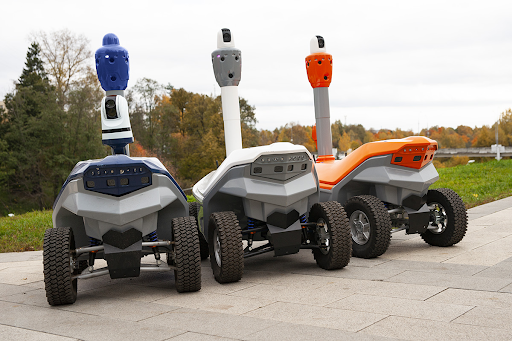As technology advances, the field of security is undergoing a significant transformation, with robotic security guards becoming a common sight in corporate buildings, public spaces, and even retail environments. These high-tech machines, often equipped with AI and machine learning capabilities, are reshaping how organizations approach safety and security. Here’s a closer look at five ways robotic security guards are revolutionizing corporate and public security.
1. Enhanced Surveillance and Monitoring Capabilities
Robotic security guards excel in surveillance, as they can continuously monitor large areas without experiencing fatigue, boredom, or distraction. Equipped with high-definition cameras, thermal sensors, and 360-degree vision, these robotic systems can identify and track potential threats in real-time. Advanced AI algorithms enable them to recognize unusual behavior patterns, such as loitering or trespassing, and instantly alert human personnel for further investigation.
2. Real-Time Threat Detection and Response
Another key advantage of robotic security guards is their ability to detect and respond to potential threats in real-time. Unlike traditional security systems, which rely on human guards or passive video surveillance, robotic security guards actively assess their surroundings. By using sensors, facial recognition technology, and even audio analysis, these robots can detect potential threats such as unauthorized entry, weapon detection, and sounds indicating distress.
Some advanced models can automatically alert law enforcement or emergency services in case of a verified threat. In public spaces, robotic security guards also assist with crowd control, effectively directing people during evacuations or emergencies. Their fast response time helps minimize risks and contain incidents before they escalate, providing a proactive approach to security that is crucial in high-stakes environments.
3. Cost-Effectiveness and Resource Efficiency
Hiring human security guards can be costly, especially for large organizations or public venues that require around-the-clock security. Robotic security guards present a cost-effective alternative. Although the initial investment can be high, these robots generally reduce long-term operational expenses by lowering the need for a large human workforce. Additionally, they can work 24/7 without the need for breaks, overtime pay, or benefits, making them a more sustainable option for some organizations.
Businesses are increasingly recognizing that robotic security guards can complement rather than replace human guards. By taking over routine monitoring tasks, robots allow human guards to focus on higher-value, decision-making roles. This balance of human and robotic security resources creates a more effective and efficient security model, one that maximizes both technological and human strengths.
4. Data Collection and Analytics for Improved Security Strategies
Robotic security guards don’t just provide real-time protection; they also collect vast amounts of data that can be used to refine and improve security strategies. Through sensors and cameras, they capture and analyze patterns, such as high-traffic areas or recurring incidents, helping organizations identify vulnerabilities in their security setups. These insights can drive targeted improvements, such as adding extra lighting to dark spots, modifying patrol routes, or increasing surveillance in areas with high activity.
Moreover, many robotic security systems come equipped with data storage and analysis tools that allow for detailed reporting. This level of data collection aids security teams in assessing trends, understanding potential threats, and implementing long-term measures for risk reduction. Over time, the data gathered by robotic security guards can lead to a continuously evolving security strategy, ensuring organizations stay one step ahead of potential risks.
5. Non-Invasive Presence and Positive Public Perception
Unlike traditional security guards, who may sometimes intimidate or cause discomfort, robotic security guards often have a more neutral, non-invasive presence. This can be especially beneficial in public spaces where a high security presence might otherwise cause alarm. Modern robotic guards are often designed with sleek, approachable aesthetics, making them look less imposing and more like a friendly piece of technology than a policing figure.
Conclusion
Robotic security guards are quickly becoming an essential component of both corporate and public security strategies, providing enhanced surveillance, real-time threat detection, cost-effectiveness, valuable data insights, and a positive public presence. By combining the strengths of AI and robotics, these advanced security solutions are reshaping the future of how we keep spaces secure. For organizations and security companies in Phoenix and beyond, robotic security guards represent a promising investment that balances technology and human capability.








